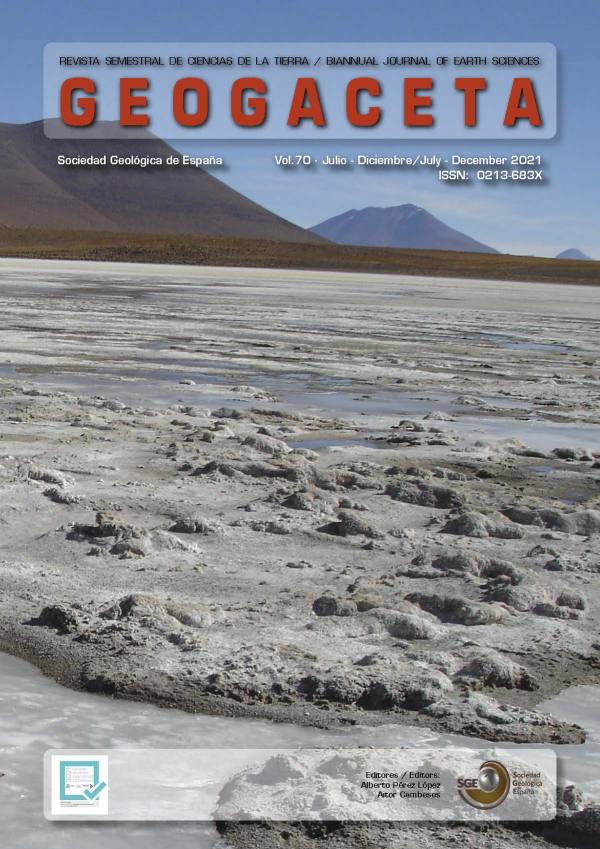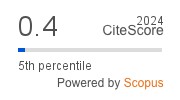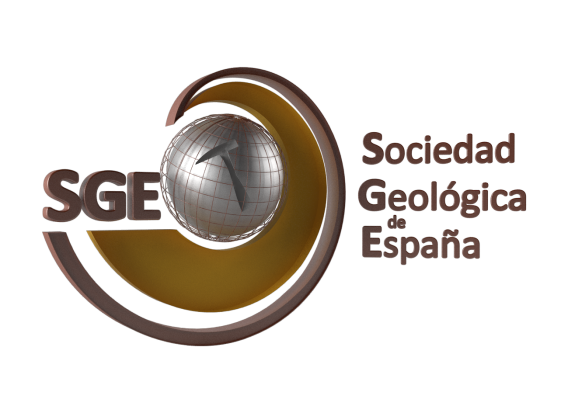Application of the passive Dispersed Alkaline Substrate (DAS) remediation system to treat highly acidic and polluted phosphogypsum leachates
DOI:
https://doi.org/10.55407/geogaceta102293Keywords:
phosphogypsum stack, column experiment, brushite, leaching testAbstract
This work studies the feasibility of the Dispersed Alkaline Substrate (DAS) technology for the passive treatment of highly acidic and polluted effluents from the phosphogypsum stack located on the Tinto river marsh soils (Huelva, SW Spain). The study consists of flowing the acidic water through a column filled with a mixture of an alkaline reagent (i.e. Ca(OH)2) scattered on an inert matrix (i.e. wood chips) capable of raising the pH of the leachate and precipitating the dissolved pollutants. The Ca(OH)2-DAS treatment system achieved the total removal of PO4, F, Fe, Zn, Al, Cr, U and As from the solutions. The precipitation of brushite [CaHPO4∙2H2O] and gypsum [CaSO4∙2H2O] seems to be the main mechanism responsible for the removal of contaminants. The solids collected from the DAS column were subjected to the EU EN 12457-2 leaching test for their classification and management according to their hazardousness. Some of these solids could be classified as hazardous wastes due to the high release of SO4. This study may contribute to the design of an effective and sustainable treatment of leachates from the fertilizer industry.
References
Ayora, C., Caraballo, M.A., Macias, F., Rötting, T.S., Carrera, J. y Nieto, J.M. (2013). Environmental Science and Pollution Research, 20(11), 7837-7853. https://doi.org/10.1007/s11356-013-1479-2
EC Decision 2003/33/CE, Council Decision of 19 December 2002 establishing criteria and procedures for the acceptance of waste at landfills. Official Journal L. 011, 16/01/2003. pp. 0027-0049.
EN 12457-2, 2002. Characterization of Waste, Compliance Test for Leaching of Granular Waste Materials and Sludges, Part 2: One Stage Batch Test at a Liquid to Solid Ratio of 10 l/kg-1 for Materials with Particle Size Below 4 mm (without or with Size Reduction). European Committee of Standardization, p. 28 CEN/TC 292,12/02.
Lottermoser, B.G. (2010). In: Mine Wastes: Characterization, Treatment and Environmental Impacts (third ed. Springer-Verlag). Berlin, Heidelberg.
Macías, F., Canovas, C.R., Cruz-Hernández, P., Carrero, S., Asta, M.P., Nieto, J.M. y Pérez-López, R. (2017). Journal of Hazardous Materials, 331, 99-108. https://doi.org/10.1016/j.jhazmat.2017.02.015
Millán-Becerro, R., Pérez-López, R., Macías, F., Cánovas, C.R., Papaslioti, E.M. y Basallote, M.D. (2019). Science of the Total Environment, 660, 395-405. https://doi.org/10.1016/j.scitotenv.2018.12.305
Papaslioti, E.M., Pérez-López, R., Parviainen, A., Sarmiento, A.M., Nieto, J.M., Marchesi, C. y Garrido, C.J. (2018). Marine Pollution Bulletin, 127, 695-703. https://doi.org/10.1016/j.marpolbul.2018.01.001
Parkhurst, D.L. y Appelo, C.A.J. (2005). PHREEQC-2 Version 2.12: a Hydrochemical Transport Model.
Pérez-López, R., Macías, F., Cánovas, C.R., Sarmiento, A.M. y Pérez-Moreno, S.M. (2016). Science of the Total Environment, 553, 42-51. https://doi.org/10.1016/j.scitotenv.2016.02.070
Rutherford, P.M., Dudas, M.J. y Samek, R.A. (1994). Science of the Total Environment, 149, 1-38. https://doi.org/10.1016/0048-9697(94)90002-7
Tayibi, H., Choura, M., López, F.A., Alguacil, F.J. y Lopez-Delgado, A. (2009). Journal Environmental Management, 90, 2377-2386. https://doi.org/10.1016/j.jenvman.2009.03.007
Downloads
Published
How to Cite
Issue
Section
License

This work is licensed under a Creative Commons Attribution-NonCommercial-ShareAlike 4.0 International License.
Until the year 2023 the author assigned the copyright to the Sociedad Geológica de España, but from 2024 the author retains the copyright and grants the Sociedad Geológica de España the right of first publication and non-exclusive distribution of each article in all current or future media, while transferring, also non-exclusively, the commercial rights for the distribution of the printed version of Geogaceta. On the other hand, the articles, from the year 2023, are available simultaneously with their publication, under the Creative Commons CC BY-NC-SA 4.0 license, which allows copying, transforming the work, but if any transformation is distributed, the new work must be distributed under the same license, and never for commercial purposes, while acknowledging the authorship and original publication in GEOGACETA, so that the only role of copyright is to give authors control over the integrity of their works and the right to be properly acknowledged and cited.









